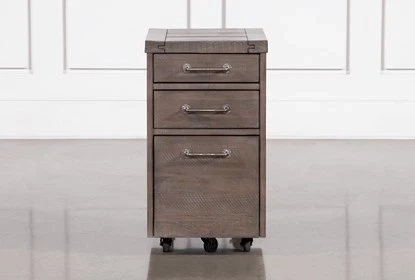Office documents need to be kept in a safe place, so your business dealings have physical records of vital evidence or information. Although storing the information is simple, organizing it efficiently is the challenging part. Anyone can throw papers into a rolling filing cabinet, but very few can make a sorted system to find a particular document promptly.
Letting important files pile up leads to a big risk – you never know when or if some document goes missing or misplaced. And nothing could make you more stressed than finding a lost file. Organizing your paperwork is the first step in making sure that you know where all the documents are at all times.
So, right before you step in front of the rolling file cabinet and start off the daunting task of sorting through all of its contents, you should follow the following essential organizational principles in your mind.
Declutter Unnecessary Materials
As you begin to clean out old cabinets or drawers, consider that the purpose should be to wind up with fewer documents than you started with. When you see an old or unneeded file or supplies from years ago, don’t hesitate to throw it out because it will only create a mess.
Additionally, having a file for “miscellaneous” documents will only upsurge disorganization and confusion down the road. Remember that these unneeded files shouldn’t be directly dumped in a trashcan but instead shredded into pieces.
Follow an A-B-C Formula
Another smart way to organize your rolling file cabinet is to follow a simple A-B-C formula. Just separate your document files into the following categories.
Action Files: Documents that involve action shortly (i.e., a contract that needs to be signed or a bill that needs to be paid on/by a specific date).Basic Files: Client correspondence, Routine services, invoices, receipts, and other recent documents about your business’s finances should be assembled with other ‘basic files’ as no longer demanding urgent attention but still too early for long-term storage.Classic Files: Records, Archives, and another crucial history that your organization depends on. These files are rarely needed, but their possession is still vital.Prioritizing documents into these three categories will help you identify what information is exceptionally pressing. This will surely save you an ample amount of time over a folder that’s basically called ‘finances.’
Use Chronological and Alphabetical
Lumping all of your patron’s information into a single or the same folder will definitely be a disaster when you immediately need to find something. File your records or paperwork in alphabetical order to make look-up hassle-free.
Moreover, for things including service records, it is best to use chronological order, giving you a fair idea of when specific repairs were made.
Go for Color Coordination
Every rolling file cabinet can be divided into wide-ranging categories. Client records, tax returns, billing records, and staff information are examples of some categorical documents you might deal with. You can label the cabinet’s contents with binders, colored sticky notes, or folders so that as soon as you open it, you know where to look for the needed document.
You can even have different color-coded bins and trays, for instance, a red box for documents that need to be thrown away, yellow for ongoing projects, and blue for documents that require revision.
To Conclude,
Undoubtedly, the process of organizing a rolling filing cabinet is like planning to save yourself from future hassle. So, the above-mentioned tips will give you a solid framework when it comes to organizing your mobile cabinet.


